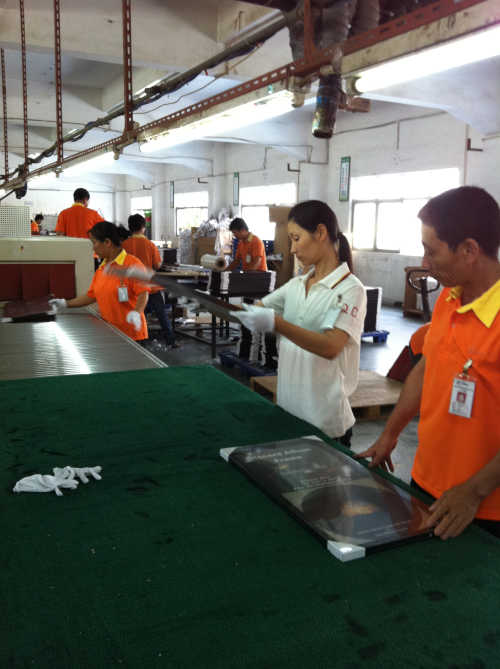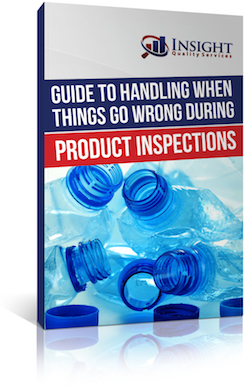As an importer, you know that product quality inspections are important, but that they come at a cost.
It’s natural to want to reduce that cost, and if you’re thinking about doing so, you need to consider how to go about it carefully. You don’t want to give your suppliers the signal that they can start producing your products to a lower standard. Instead, you want them to keep doing the good work that they, hopefully, already are.
So, is it safe to inspect fewer shipments?
First of all, it’s important to understand that when you’re not inspecting every shipment, you are doing what we in the industry call “skip-lot inspections.” And doing skip-lot inspections can be a good way to save quality dollars, but only if you go about it in the right way.
There is really no one-size-fits-all answer to the question about whether or not to reduce inspections. But, today we’re going to give you some pointers to help you decide whether or not this is the right choice for you.
Let’s talk about skip-lot inspections, in what circumstances you should consider them, and how you might go about reducing inspections in the smartest possible way.
Should You Consider Skip-Lot or Reduced Inspections?
 To reiterate, conducting skip-lot inspections means not inspecting every shipment, but still inspecting at a regular, predetermined frequency.
To reiterate, conducting skip-lot inspections means not inspecting every shipment, but still inspecting at a regular, predetermined frequency.
It’s very important to note that you should avoid stopping inspections altogether.
Recently, we wrote about quality fade and how it is a real concern in low-cost countries. This is where the quality of your product starts out good, but slowly declines over time without you noticing. Eventually, it manifests itself as a major quality issue that triggers a rash of customer complaints or a recall.
Stopping inspections altogether puts you at a much greater risk of this happening.
You also shouldn’t inspect random shipments based on gut instinct or without a specific quality plan in place. Everything you do should be based on procedures that you have documented for your business. Whatever your inspection frequency, it should be part of a written and well-thought-out quality plan. That way, you can make smart adjustments to it as situations change.
So When Exactly Should You Consider Reduced Inspections?
Again, there is no one-size-fits-all answer to this question. But there are different factors to consider. It is worth considering a reduced inspection frequency in the following situations:
- You have an established, long-term relationship with a factory that has been going well, and they have a history of producing good quality products that pass inspections.
- You have multiple suppliers and have collected inspection data that tells you which ones are producing better quality products. You can consider reducing inspections at the higher-performing factories and maintain or increase inspections at lower-performing ones.
- You are ordering the same item on a regular, continuous schedule, rather than purchasing it sporadically. An item that is ordered sporadically is more likely to have quality issues when you place your order.
- You are placing orders for the same product frequently (i.e. more than once per quarter). This allows for your factory to get good at making the product, as they are making it on a regular basis.
Some other things to consider when thinking about reducing frequency are the complexity of your product and your product category. A very complex product or one that needs to have zero failures might require you to maintain your current inspection level.
How to Safely Reduce Inspection Frequency
 At Insight, we advocate for what’s called “smart quality spend.”
At Insight, we advocate for what’s called “smart quality spend.”
This means taking steps to maximize your quality control budget, for example, by inspecting less at higher-performing factories and inspecting more at lower-performing ones.
It also means that, if you’re thinking about reducing inspections, you should define specific quality metrics that a supplier should meet before doing so. Then, after reducing inspection frequency, you should monitor the inspection results closely to see if they remain consistent.
If they don’t, and you are seeing failed inspections, bump the frequency back up to the previous level. After doing so, continue to monitor and, if things go well for a predefined period, drop it back down again.
If you’ve developed a good relationship with the supplier, you may be able to work out a deal with them where they are responsible for the cost of additional inspections if you have to go back to the original frequency.
Keep in mind that when you conduct inspections at a factory, there are costs to them as well. They need to devote energy to complying with the inspector and then repackaging goods after the inspections. Reduced inspections can be a good reward for consistently producing quality products.
Summary
Reducing your inspection frequency can be a good way to lower your quality control budget or maximize its effectiveness.
However, we recommend that you don’t stop inspecting altogether. Any reduction in inspection frequency should be well calculated and based on historical inspection data. You should also monitor your inspection results carefully to ensure that they are maintaining the same level of quality. If not, consider bumping frequency back up until they are.
Reducing inspections can be a good reward for suppliers that have done good work for you. But a lax attitude towards quality control can lead factories to get complacent and make it more likely that things will go wrong.
For more information about what to do when things go wrong, we recommend reading the following eBook.
Free Guide: What to do When Things Go Wrong
When a quality problem happens – and they will – how you approach the problem makes all the differences in successfully squelching it.
Learn how to deal with the problem at hand, see potential quality gaps throughout your supply chain, and take proactive measures to avoid future problems.





0 Comments